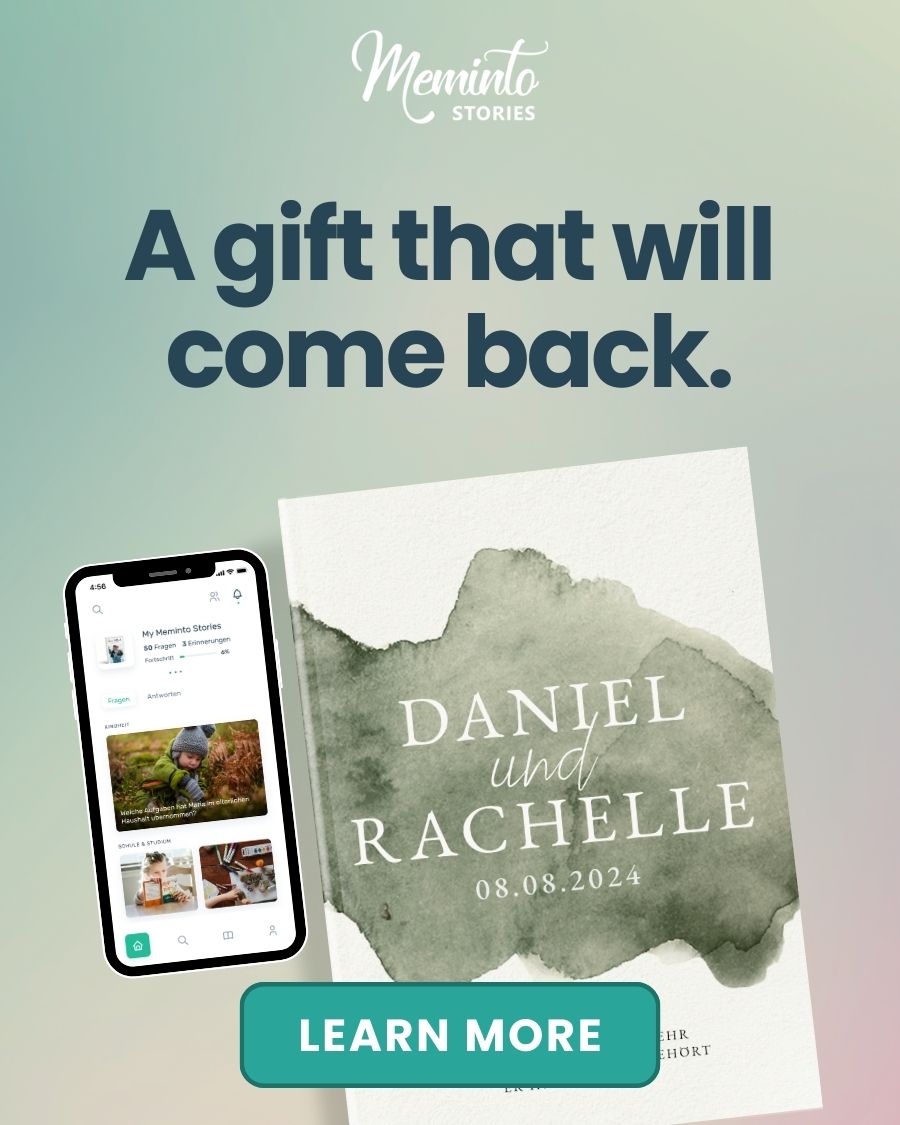I’ll never forget the first time I listened to an old recording of my grandfather telling stories from his childhood. Hearing his voice—his laughter, the way he paused to remember a detail, the warmth in his words—brought his memories to life in a way that written stories never could. Audio recordings have a magical way of capturing not just the words, but the emotions, the little quirks, and the laughter that make our families truly unique. When you hear your grandmother’s gentle encouragement or your dad’s unmistakable laugh, you realize just how precious these moments are. Family stories aren’t just memories—they’re a living legacy, a blessing for our children and grandchildren, and a source of strength and connection that we can pass down for generations.
Why Family Stories Matter: Preserving Your Family’s Heritage
Family stories bind us together, creating a sense of belonging and helping children learn about their roots. Whether it’s a story about your father’s childhood adventures, your mother’s resilience, or a grandparent’s journey, these stories help young children understand where they come from. They also offer encouragement and appreciation, especially during family celebrations or even at a funeral, when remembering a loved one’s life brings comfort and connection.
Preparing for Family Story Interviews: Questions and Setup
Thoughtful questions are the heart of every great family story. Use prompts like, “What advice would you give your younger self?” or “Can you share a childhood adventure?” to encourage your dad, grandmother, or any family member to open up. These questions help children learn about resilience, appreciation, and the blessings that come from sharing family stories.
Example Prompts for Family Stories:
- What qualities do you admire most in your father or mother?
- Can you share how you learned to ride a bike as a child?
- What family traditions or holidays do you remember most fondly?
- Describe the home where you spent most of your childhood.
- What was your favorite annual family celebration?
- How did your family support you during heartbroken times?
Choose a quiet space and reliable equipment to ensure your family stories are recorded clearly. Whether you’re interviewing your grandpa, aunt, uncle, or great-grandfather, a comfortable environment helps everyone share their stories naturally. Tools like Meminto Stories make it easy to record, transcribe, and organize your family’s history.
Quick Guide to Oral History with a Smart Phone or Zoom
Recording and Organizing Family Stories: Tips and Best Practices
- Use a quality microphone to capture every detail of your family stories.
- Test your setup before starting, so you don’t miss a single word from your grandmother or father.
- Encourage relatives to speak from the heart – the most memorable family stories often come from unfiltered emotions and spontaneous memories.
- Organize your files with a consistent naming system, like
2025-04-24_GrandmaMary_ChildhoodStories.mp3, so you can easily find each story later. - Store your files in folders by family member, year, or topic. Always back up your family stories on your local drive, an external drive, and in the cloud to keep your family’s memories safe.
If you have long recordings, break them into smaller segments by topic – for example, childhood, family celebrations, or stories about resilience. This makes it easier to revisit specific family stories, whether you want to remember a holiday, a funeral, or a special moment of encouragement.
Combining Audio and Text: Creating a Family Memory Book
With tools like Meminto Stories, you can merge audio and text, preserving both the sound and the meaning of your family stories. Add short written introductions to each audio clip, and use speech-to-text features to create a family memory book that future generations will treasure. This approach is perfect for families who want to create a digital family archive or even a memoir that can be passed down.
The Power of Family Stories: Building Resilience and Connection
Recording family stories is about more than just saving words – it’s about capturing the voices, laughter, and emotions that define your family’s unique heritage. These stories become a blessing for your children, grandchildren, and even great-grandchildren, helping them appreciate where they come from and the resilience that runs through your family. Sharing family stories at annual celebrations, holidays, or even in a simple diary helps everyone feel connected and valued.

Tips for Sharing and Celebrating Family Stories
- Share your family stories with relatives at family gatherings or through a digital archive.
- Encourage young children to ask questions and add their own stories, building a tradition of storytelling.
- Celebrate your family’s ethnic background and unique traditions by including stories from all family members—grandma, grandpa, aunt, uncle, and even young boys and girls.
- Use your family stories to create a sense of belonging and appreciation, especially during important milestones or when someone is feeling heartbroken or in need of encouragement.
Conclusion: Start Recording Your Family Stories Today
Family stories are a priceless gift. By recording, organizing, and sharing them, you preserve your family’s history, build resilience, and create a legacy of love and connection. Start today—embrace the adventure of capturing your family’s voices, and create a family story collection that will be cherished for generations.
FAQs
What are the best types of questions to ask during family interviews to uncover meaningful stories?
The key to uncovering meaningful family stories lies in asking open-ended, thought-provoking questions. These types of questions encourage detailed, personal responses and help family members reflect on their experiences.
For example, you might ask:
- What was one of the happiest moments of your childhood?
- Can you share a story about a challenge you overcame and what you learned from it?
- What traditions or values were most important to your family growing up?
Questions like these invite storytelling and create opportunities for deeper connections while preserving cherished memories for future generations.
How can I record high-quality audio for family interviews?
To capture clear and professional audio for your family interviews, follow these tips:
- Choose a quiet location: Minimize background noise by selecting a quiet space and turning off any distractions, like fans or TVs.
- Use a quality microphone: A dedicated external microphone often provides better sound quality than built-in device microphones.
- Check your settings: Ensure your recording device is set to a high audio quality format, such as WAV or MP3.
- Position the microphone correctly: Place the microphone about 6–12 inches from the speaker’s mouth and avoid holding it too close to prevent distortion.
- Test before recording: Do a quick test to adjust volume levels and confirm the sound is clear.
By following these steps, you can create recordings that are perfect for preserving family stories and memories.
What are some tips for organizing and backing up audio recordings from family interviews?
To keep your family interview recordings safe and organized, follow these best practices:
- Create a dedicated folder: Set up a specific folder on your computer or external drive for all your audio files. Use clear, descriptive names for subfolders, such as by date (e.g.,
2023-10-15) or by interviewee. - Use consistent file naming: Rename your audio files with meaningful names, like
Grandma-Mary-Childhood-Stories.mp3. This makes it easier to locate specific recordings later. - Back up your files: Store copies of your recordings in multiple locations. Use a combination of external hard drives, cloud storage services, or USB drives to ensure your files are safe from accidental loss.
- Convert to universal formats: Save your recordings in widely supported formats like MP3 or WAV to ensure compatibility across devices and platforms.
Organizing and backing up your audio files not only protects your memories but also makes them more accessible for future storytelling projects, such as creating a Life Book with Meminto Stories.
{“@context”:”https://schema.org”,”@type”:”FAQPage”,”mainEntity”:[{“@type”:”Question”,”name”:”What are the best types of questions to ask during family interviews to uncover meaningful stories?”,”acceptedAnswer”:{“@type”:”Answer”,”text”:”
The key to uncovering meaningful family stories lies in asking open-ended, thought-provoking questions. These types of questions encourage detailed, personal responses and help family members reflect on their experiences.
n
For example, you might ask:
n
- n
- What was one of the happiest moments of your childhood?
- Can you share a story about a challenge you overcame and what you learned from it?
- What traditions or values were most important to your family growing up?
n
n
n
n
Questions like these invite storytelling and create opportunities for deeper connections while preserving cherished memories for future generations.
“}},{“@type”:”Question”,”name”:”How can I record high-quality audio for family interviews?”,”acceptedAnswer”:{“@type”:”Answer”,”text”:”
To capture clear and professional audio for your family interviews, follow these tips:
n
- n
- Choose a quiet location: Minimize background noise by selecting a quiet space and turning off any distractions, like fans or TVs.
- Use a quality microphone: A dedicated external microphone often provides better sound quality than built-in device microphones.
- Check your settings: Ensure your recording device is set to a high audio quality format, such as WAV or MP3.
- Position the microphone correctly: Place the microphone about 6–12 inches from the speaker’s mouth and avoid holding it too close to prevent distortion.
- Test before recording: Do a quick test to adjust volume levels and confirm the sound is clear.
n
n
n
n
n
n
By following these steps, you can create recordings that are perfect for preserving family stories and memories.
“}},{“@type”:”Question”,”name”:”What are some tips for organizing and backing up audio recordings from family interviews?”,”acceptedAnswer”:{“@type”:”Answer”,”text”:”
To keep your family interview recordings safe and organized, follow these best practices:
n
- n
- nCreate a dedicated folder: Set up a specific folder on your computer or external drive for all your audio files. Use clear, descriptive names for subfolders, such as by date (e.g.,
2023-10-15) or by interviewee.n - nUse consistent file naming: Rename your audio files with meaningful names, like
Grandma-Mary-Childhood-Stories.mp3. This makes it easier to locate specific recordings later.n - nBack up your files: Store copies of your recordings in multiple locations. Use a combination of external hard drives, cloud storage services, or USB drives to ensure your files are safe from accidental loss.n
- nConvert to universal formats: Save your recordings in widely supported formats like MP3 or WAV to ensure compatibility across devices and platforms.n
n
n
n
n
n
Organizing and backing up your audio files not only protects your memories but also makes them more accessible for future storytelling projects, such as creating a Life Book with Meminto Stories.
“}}]}

















